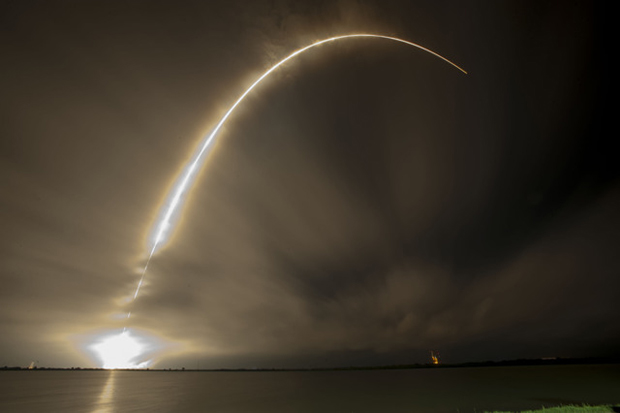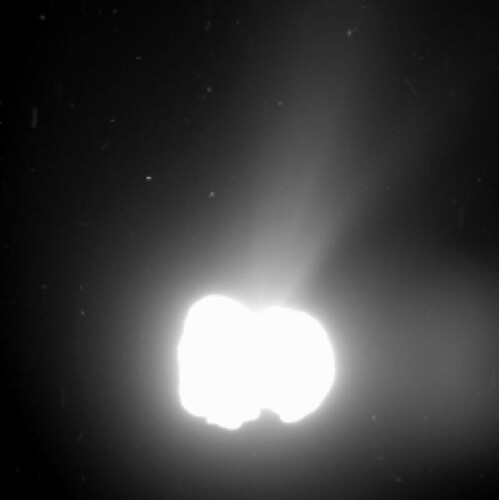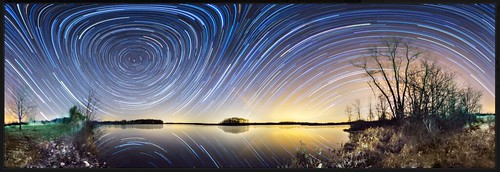European DTH market may be poised for a significant shakeup in the coming months, following a proposed merger between three of the continent’s largest DTH platforms.
[NSR – 08/08/2014]
There is a mismatch between what entrepreneurs building large cubesat constellations want to buy and what traditional suppliers are offering.
[Space News – Space News – 08/08/2014]

Credit: Dennis Wingo graphic/Inset ISEE-3 Reboot Project artist’s concept by Mark Maxwell – Space News
A group including Google is to offer live streaming of data from satellite missions beginning with the Aug. 10 lunar flyby of NASA’s 36-year-old International Sun-Earth Explorer (ISEE)-3) through a new website called SpacecraftForAll.com.
[Space News – 08/08/2014]
SingTel Satellite joins forces with three of the world’s main maritime charities to help seafarers use onboard technology to keep in touch with loved ones at home.
[Satellite Spotlight – 08/08/2014]
Orbcomm expects revenue boost now that SpaceX has patched the firm’s “hole in the sky.”
[Space News – 08/08/2014]
Dismissed SpaceX employees sue over lack of warning.
[Space News – 08/08/2014]
MSTelcom extends agreement with Intelsat to expand satellite broadband services in Angola.
[TMCnet – 08/08/2014]
Avanti and iSAT sign multi-year contract to extend East Africa satellite broadband coverage.
[4-traders – 08/08/2014]
Afghan TV channel to be broadcast via Azerspace-1 satellite. [News.Az – 08/08/2014]
GVF launches online training courses to prepare students to complete the EUI Basic Technical Operator certification exam.
[SatNews – 08/08/2014]
Walton Enterprises expands de-ice systems manufacturing capacity through move to new facilities in San Bernardino, California.
[SatNews – 08/08/2014]
July 2014 marked end of period of no orders for full electric propulsion satellites since the March 2012 deal between Boeing, SpaceX, ABS and Satmex – SES, Eutelsat, and Aniara announced orders.
[NSR – 08/07/2014]
IBISWorld Satellite & Earth Communication Systems Services Procurement Category market research report updated; expects decline in prices in three years to 2014.
[PRWeb – 08/07/2014]
U.S. looks to Japan space program to close Pacific communications gap.
[Space Daily – 08/07/2014]
Well-known hacker to demonstrate ability to hack satellite communications equipment that ground troops use to co-ordinate movements and airlines use for navigation..
[News.com – 08/07/2014]
A new attitude system developed by the Air Force and a small business offers improved maneuverability capabilities for small space research satellites.
[SatNews – 08/07/2014]
UAE sets its sights on space by announcing a mission to Mars.
[Khaleej Times – 08/07/2014]
CASBAA is hopeful that India is closer to enacting long-awaited reforms to its satellite policies under the leadership of new Indian Prime Minister.
[Via Satellite – 08/07/2014]
COM DEV gets Authorizaton and Proceed contract for C- and Ku-band multiplexers and coaxial and waveguide switches for a customer’s high throughput satellite.
[Via Satellite – 08/07/2014]
Inmarsat establishes office in Beijing, China.
[CRIENGLISH.com – 08/07/2014]
Though departing subscribers have undercut subscriber additions, EchoStar still enjoys satellite broadband revenue gains.
[Space News – 08/07/2014]
Norsat secures $1.7 million order from Datacom for X-band marine VSAT terminals for a military project in Asia.
[The Wall Street Journal]

Digital rendering of a Firefly launch system. Photo: Firefly Space Systems – Space News
Small satellite startup launch company Firefly Space Systems recruits General Astronautics to join its strategic team.
[Via Satellite – 08/07/2014]

Cubesat – Satellite Evolution Group file image.
Universal Space Network moderated a meeting of 20 CubeSat industry leaders in an effort to develop a standardized communications package.
[Satellite Evolution Group – 08/07/2014]

Space Daily File image: Mobile User Objective System (MUOS) satellite.
Fourth MUOS communication satellite clears launch-simulation test.
[Space Daily – 08/06/2014]
C-COM iNetVu antenna systems deployed to assist with communications during recent earthquake in China.
[Market Wired – 08/06/2014]
ILS forming review board in September to determine whether Proton should be cleared to return to commercial flight this fall.
[Space News – 08/06/2014]

Delivery of an RD 180 engine – Credit ULA photo – Space News
Notwithstanding sanctions, ULA is standing by for RD-180 deliveries through 2017.
[Space News – 08/06/2014]

Credit: ESA/Rosetta/MPS for OSIRIS Team MPS/UPD/LAM/IAA/SSO/INTA/UPM/DASP/IDA image – Space News
Europe’s comet-hunting Rosetta probe reaches “scientific Disneyland” after 10 years of cruising through space on trajectory to bring it to the comet.
[Space News – 08/06/2014]

Credit: ESA/Rosetta/MPS for OSIRIS Team MPS/UPD/LAM/IAA/SSO/INTA/UPM/DASP/IDA image – Sports Illustrated
Charter Communications will broadcast the SEC Network after ESPN reached an agreement with the satellite company.
[Sports Illustrated – 08/06/2014]

An oil rig towing. Photo: Jay Phagan (Flickr) – Space News
Nearly a quarter of RigNet’s revenue for the second quarter of the fiscal year came from the $25 million acquisition of Inmarsat’s enterprise energy business unit.
[Via Satellite – 08/06/2014]

Generation Orbit’s Flight Experiment Testbed. Photo: Generation Orbit – Space News
Generation Orbit Launch Service successfully completed captive-carry test flight for its air-launch SmallSat vehicle.
[Via Satellite – 08/06/2014]
D’Amico launches shipboard communications app, toctoc, that acts as hub to synchronise and connect to smartphone contacts and across range of social media channels.
[Digital Ship – 08/06/2014]
PAR Technology Corporation subsidiary Rome Research Corporation gets contract potentially worth $23.5 million to continue support to operate and maintain NAVSATCOMMFAC Northwest.
[The Wall Street Journal – 08/06/2014]
Orange Niger taps Intelsat for cellular backhaul services.
[Via Satellite – 08/06/2014]

SpaceX Falcon 9 launch of Asiasat 8 – Credit: SpaceX – CBS News
SpaceX Falcon 9 launches AsiaSat 8 communications satellite.
[CBS News – 08/05/2014]
SpaceX to build world’s first commercial site for orbital rocket launches in the southernmost tip of Texas.
[R&D Magazine – 08/05/2014]
SSL to build Intelsat 36 satellite.
[Via SAtellite – 08/05/2014]
Google closes Skybox Imaging purchase.
[Via Satellite – 08/05/2014]

Empowering Mission-Critical Broadband Satellite Communications for Naval Vessels – SatNews
ORBIT Communication Systems announces that it has received a $2.5 million order to provide satellite communication systems to one of the world’s principal navies.
[SatNews – 08/05/2014]
SkyVision wins VSAT deal with Bank of Africa Burkina Faso.
[Via Satellite – 08/05/2014]
Steadily increasing capacity, reduced costs, modular functionality and higher data transfer rates now mean satellite communications can exceed even the most stringent requirements for public safety communications, all delivered through a more robust network than 4G LTE.
[Government Video – 08/05/2014]
Frontline Communications partners with TVU Networks to introduce new cellular/microwave/satellite IP vehicle solution.
[CNN Money – 08/05/2014]
United Launch Alliance carries the Air Force’s seventh Global Positioning System (GPS 2F-7) satellite to space.
[Via Satellite – 08/04/2014]
Iridium has delivered the first satellite engineering model for the upcoming Iridium NEXT constellation.
[SatNews – 08/04/2014]
Surrey Satellite Technology Ltd. CEO feels that applying Commercial Off The Shelf (COTS) consumer technology to satellite will continue to revolutionize satellite design over the next decade.
[Via Satellite – 08/04/2014]
Booz Allen Hamilton Engineering Services will introduce to the public safety community its new next-generation broadband deployable communications system.
[MarketWatch – 08/04/2014]
NSR Report provides comprehensive market analysis of the three major methods of UltraHD consumption via satellite – DTH, IPTV, and Cable distribution.
[NSR Report – August 2014]
WBMSAT satellite communications consulting services
| Technical Proposals |
System Acceptance Testing |
| Link Analysis |
System Quality Testing |
| Systems Engineering |
Project Management |
| Systems Integration |
Satellite Industry Research |
360-895-0478 email: [email protected]























